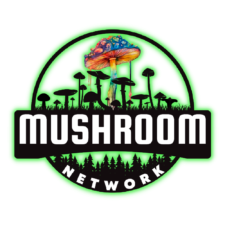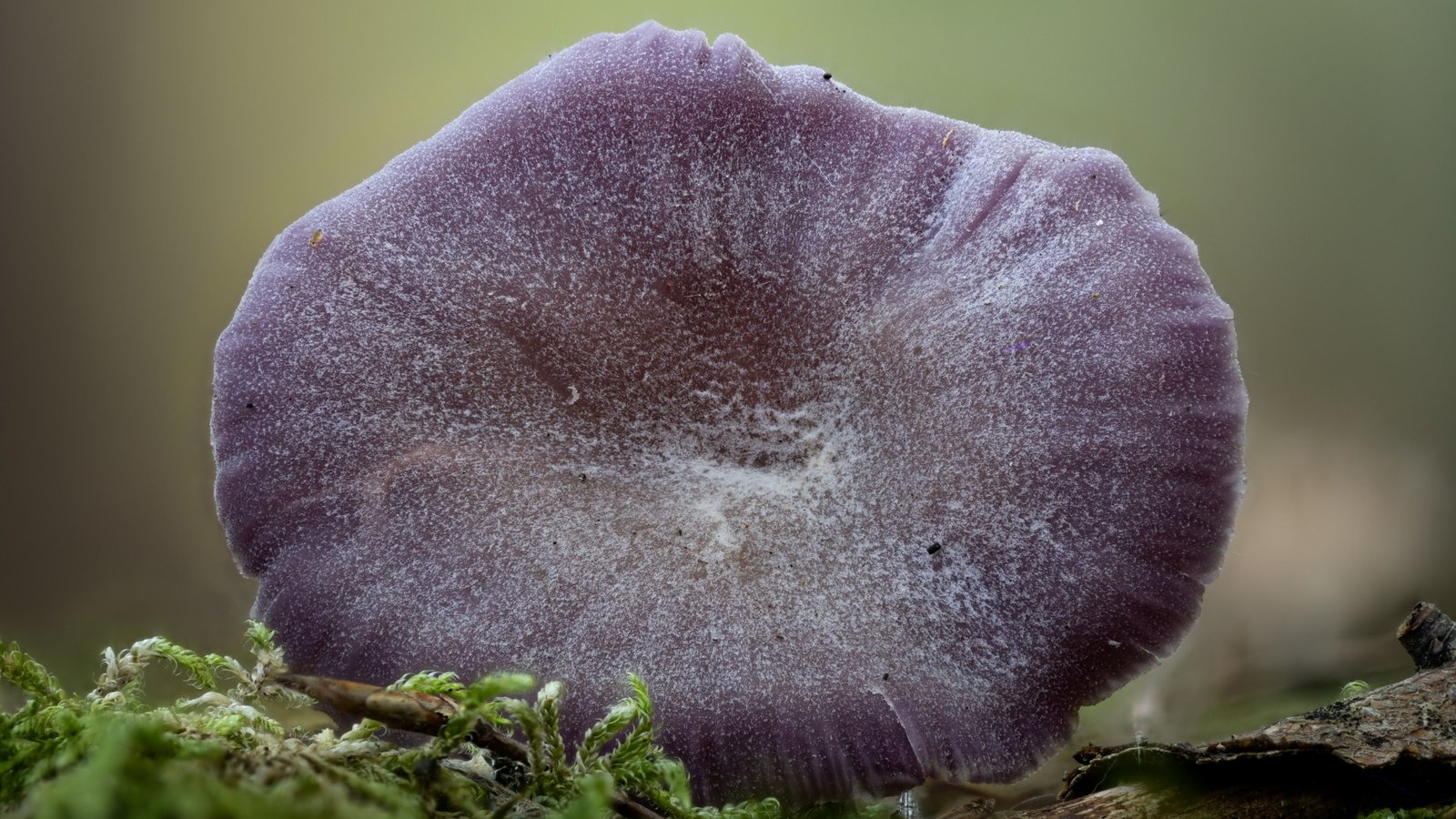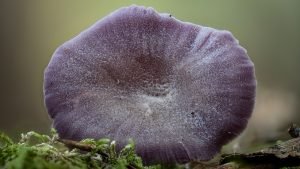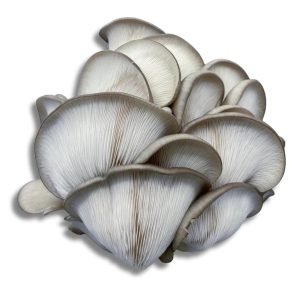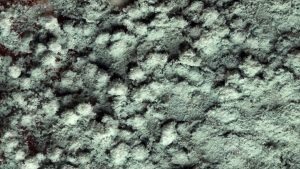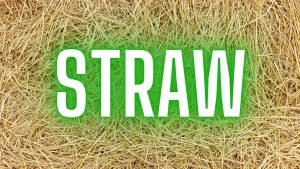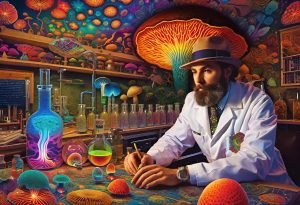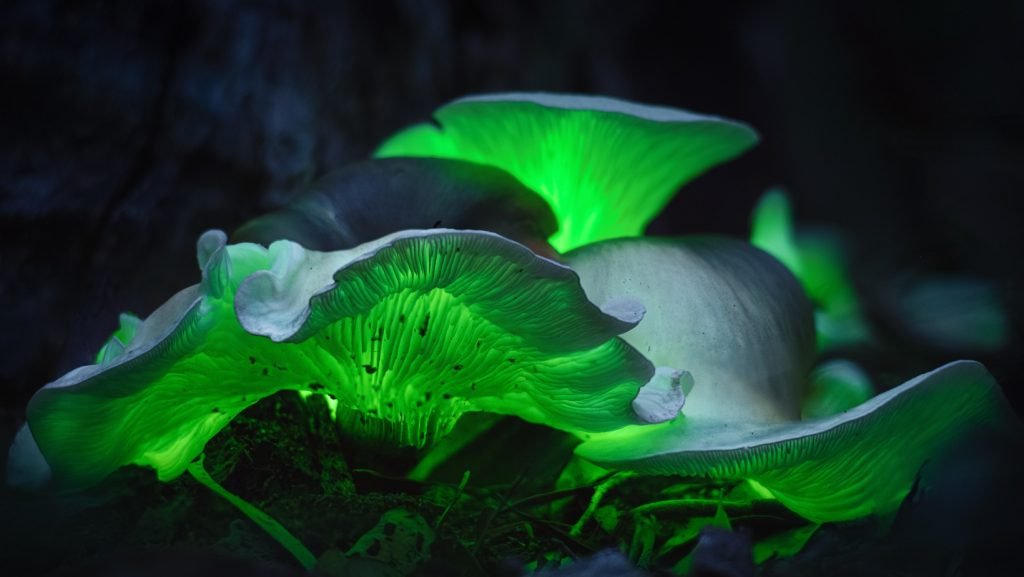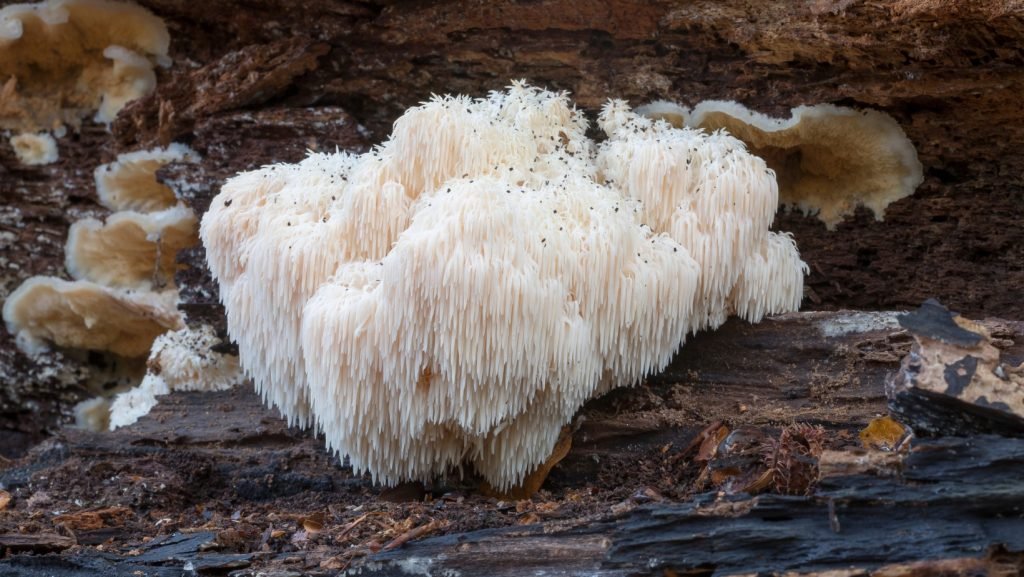Welcome, fungi enthusiasts and scholars! Step into the enchanting world of Laccaria Amethystina, a mushroom as mystical as it is mysterious. Join us as we unfold the secrets of the Amethyst Deceiver, a true gem in the realm of mycology.
SCIENTIFIC NAME:
(Laccaria Amethystina)
COMMON NAME(S):
Amethyst Deceiver | Purple Laccaria | Violet Laccaria | Amethyst Laccaria
I-NAME:
AMDE
Founding Mycologist/Discovered By:
-Unknown-
If you have information, please help us enrich our database!
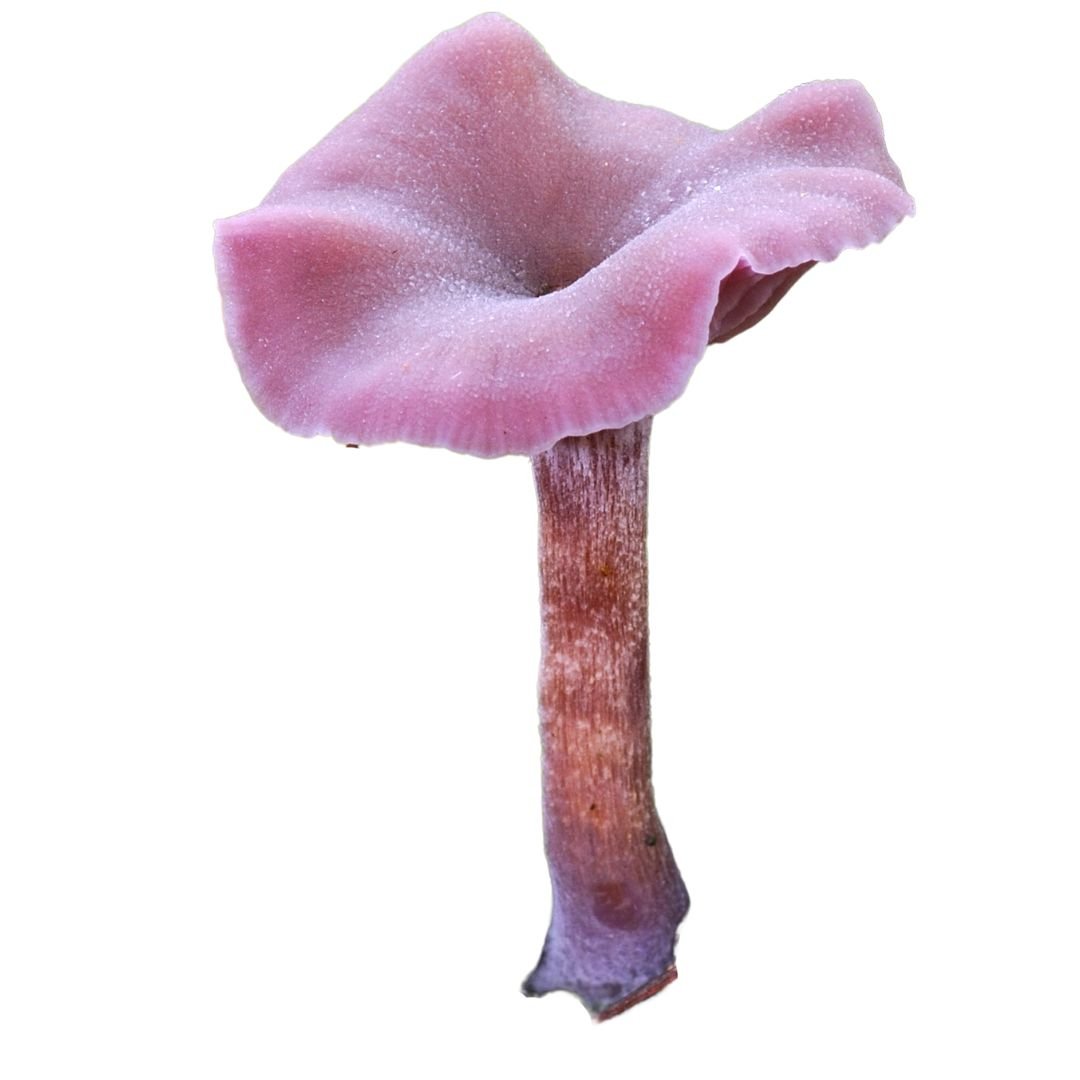
RECOMMENDED TEMPERATURES
Colonizing Temps:55° – 60° | Fruiting Temps:50° – 55° |
SPORE COLOR:
WHITE WITH A HINT OF VIOLET
Discover the Laccaria Amethystina, a mushroom that deceives not with malice but with beauty. Its striking purple hue and delicate form belie its hardy nature and adaptability, making it a fascinating subject for mycologists and nature lovers alike.
DESCRIPTION:
This mushroom captivates with its vibrant amethyst color and petite, convex caps. The gills and stem share the same enchanting hue, creating a harmonious display of natural purple.
INTENDED USES:
- 🍽 Gourmet (Edible): Known for its mild taste and unique color, perfect for adding a pop of color to dishes.
- 🔬 Mycology Research: A popular subject for ecological and biological studies due to its distinctive coloration and habitat preferences.
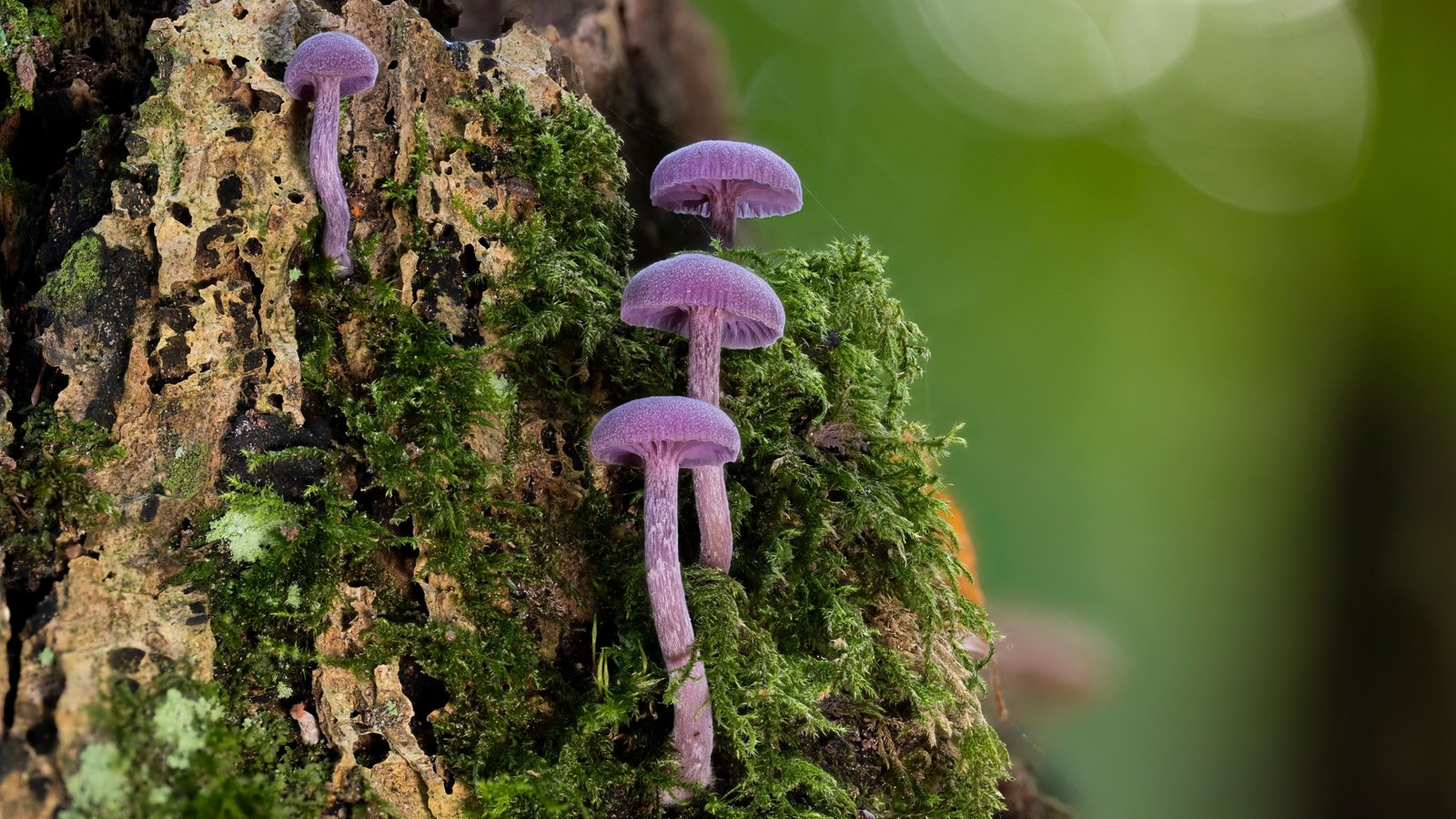
HABITAT AND DISTRIBUTION:
Prefers deciduous and coniferous forests, often found in mossy areas. Widely distributed across Europe, North America, and parts of Asia.
ECOLOGICAL ROLE:
Plays a crucial role in forest ecosystems as a decomposer, aiding in nutrient cycling and supporting forest health.
GROWTH AND CULTIVATION:
While not commonly cultivated, it thrives in cool, moist environments. Its growth is a study in resilience and adaptability, often flourishing in nutrient-poor soils.
No posts found!
HISTORICAL & CULTURAL INFO:
The Amethyst Deceiver has long been a subject of fascination due to its striking appearance. Its history intertwines with folklore and culinary traditions, making it a colorful character in the narrative of mycology.
GENETIC LINEAGE/HISTORY:
Genetic studies suggest a diverse lineage, adapting to various habitats and climates. Ongoing research continues to uncover its intriguing genetic background.
No posts found!
CHEMICAL COMPOSITION:
Contains antioxidants and micronutrients typical of edible mushrooms. Its unique pigmentation is a focus of chemical analysis in mycological studies.
MEDICAL PROPERTIES (if applicable):
While primarily known for its culinary uses, ongoing research explores potential health benefits linked to its unique composition.
CULINARY USES (if applicable):
A delightful addition to culinary creations, offering a mild flavor and striking color. Popular in sautéed dishes, risottos, and as a garnish.
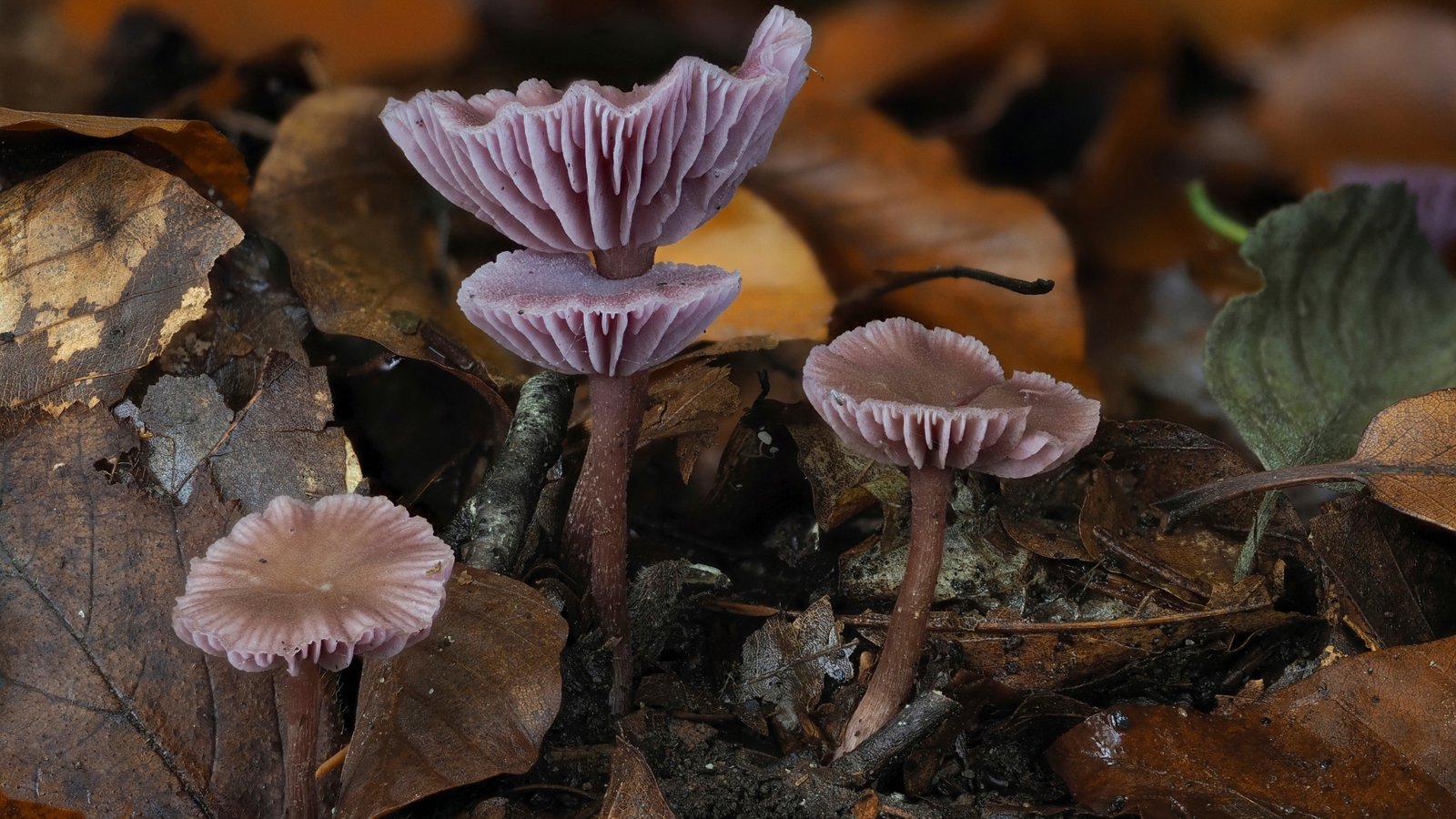
CAUTIONS & WARNINGS:
Accurate identification is crucial, as its vibrant color can fade with age, leading to confusion with inedible species. Always consult a mycology expert. It is important to consult a doctor before consuming any mushrooms, especially if you have a pre-existing medical condition or are taking medication.
FINAL CONSIDERATIONS:
As we close this chapter on the Amethyst Deceiver, remember that in the world of fungi, not all is as it seems. Venture into our 🍄 Marketplace to discover the multifaceted wonders of Laccaria Amethystina.
Thank you for joining us on this purple-hued journey with the Amethyst Deceiver. May your mycological adventures be as colorful and intriguing as Laccaria Amethystina itself. Until next time, keep exploring the vibrant world of fungi!
Don’t forget to check out the 🍄 Mushroom Network’s Marketplace to see what’s available. But hurry, our shelves are constantly evolving, and you wouldn’t want to miss out on this wonderful mushroom. Join our growing network of Patrons, Genetics, and Mycologist Vendors only on the 🍄 Mushroom Network!
No posts found!
No posts found!
FAQs:
Yes, when properly identified and prepared.
Light sautéing preserves its color and flavor.
In mossy parts of deciduous and coniferous forests.
Cultivation is challenging due to its specific ecological requirements.
Its striking purple color and ecological adaptability.
Related Articles:
Amethyst Deceiver (Laccaria Amethystina)
Welcome, fungi enthusiasts and scholars! Step into the enchanting world of Laccaria Amethystina, a mushroom...
Read More...Other Mushroom Species To Research:
King Blue Oyster (Pleurotus Ostreatus)
Scientific Name: Pleurotus Ostreatus COMMON NAME(S): King Blue Oyster | Blue Oyster | Blue Pearl...
Read More...Bleeding Fairy Helmet (Mycena Haematopus)
Greetings, fungal aficionados and curious minds! Today, we delve into the enigmatic world of Mycena...
Read More...Shrimp of the Woods (Entoloma Abortivum)
Welcome, mycophiles and curious minds, to a fascinating exploration of the Entoloma Abortivum – a...
Read More...Enoki (Flammulina Velutipes)
Welcome to the intriguing world of the Enoki mushroom, a culinary delight and a scientific...
Read More...Other Recommended Reads:
Fungus Among Us: The Battle Against Contamination
About This Article: Join us in ‘Fungus Among Us: The Battle Against Contamination’ for an...
Read More...Substrate for Mycology: A Comprehensive Guide on Straw
Dive deep into the world of straw-based substrates, a pivotal element in the mycological realm...
Read More...10-Minute Portobello Pizzas – The Guilt-Free Pizza
About This Article: Who said pizzas are junk food? Meet the 10-minute Portobello pizza—where Italian...
Read More...Psychedelic Research: The Role of Psilocybe Cubensis in Mental Health Studies
About This Article: 🍄 Dive into the science of psychedelics! Explore how Psilocybe cubensis is...
Read More...Whoa there, Spore Sport! 🍄 Looks like you’re not logged in yet. Don’t you know what you’re missing? MYCO-CREDITS! Imagine all the fungal fun you could have. It’s like finding a Morel in May and not picking it. Tragic, right? Log In or Become a Myco-Patron and start racking up those credits. It’s more rewarding than finding a mushroom in your backyard! 🌟🏡
